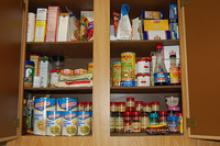Hilary Burns, "Cane, Rush and Willow: Weaving With Natural Materials"
It is also, as the subtitle implies, dedicated to weaving with twigs and grasses from the wild. Whereas many weaving books, I have found, will incorporate just about every material, from nylon tubing to organdy ribbon and everything in between.
For the most part, Cane, Rush and Willow presumes that you want to gather and prepare your own material. This was my original plan, although to be honest with you, after reading about what's involved, I have some reservations. Do I REALLY want to go through all that? I'm not sure.
I didn't realize that you have to soak everything for a while before you use it. You can buy materials pre-soaked of course, but considering the cost, why bother?
Aside from gathering your material, there is a lot of instruction on how to cut it once you have it. Nearly every technique includes instructions and pictures for using a sharp knife to perform some kind of critical procedure. Most of which I am confident I would end up amputating my own thumb by accident, instead of nicely splitting the switch.
Cane, Rush and Willow uses a lot of jargon, which can be intimidating to the new user. Although everything is defined in time, it's difficult to browse through and make sense of phrases like, "A scallom Is a long tail cut on the butt end of a rod. By paring away the pith, the part left is flexible enough to use as a wrap."
The technique instruction takes up fully the first third of the book (as well it might). The rest of the book is dedicated to patterns and projects, from simple to complex. Most of these projects are gorgeous, although I have serious reservations about the dry wicker candle holders. Even though the project specifies that the candle shouldn't be left unattended… I just couldn't recommend it, as pretty as it is.
I liked the gallery pages as much as anything. Interspersed between the various projects, the gallery pages showcase finely crafted woven items from around the world, including everything from fine art to everyday cultural artifacts. Aside from being fascinating objects to study, it served as an interesting reminder that weaving, and the process of forming grasses and twigs into necessary objects, is something that all cultures have in common. From the Irish potato baskets to the African bracelets, these gallery items are wonderful.
As I flipped through the book, I kept thinking about how much I would have loved doing these projects as a kid. From the coracle (a small but functional boat) to the arbor (perfect as a secret fort, if you let the blackberries grow over it), I think a lot of these projects would really appeal to teenagers and even pre-teens. (Maybe not the knife work, though!)








